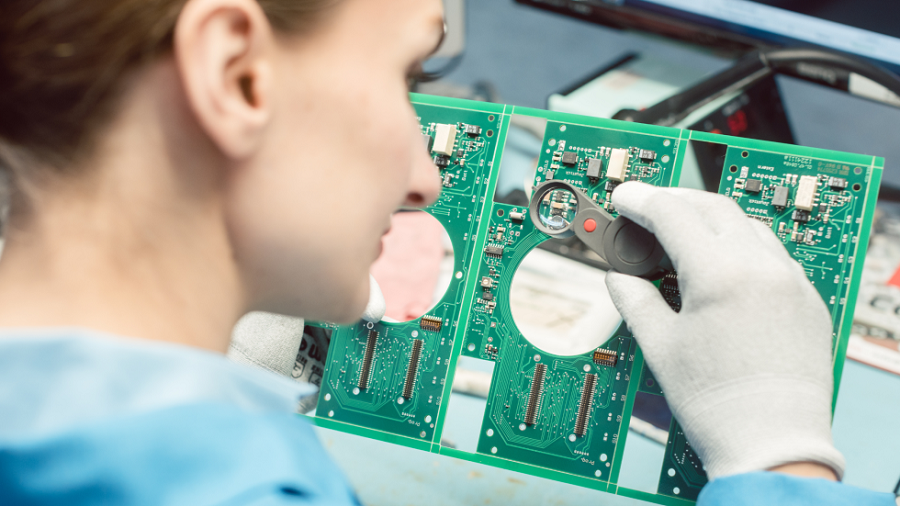Printed Circuit Board (PCB) assembly is a critical process in the creation of modern electronics. Whether it’s in consumer gadgets, medical devices, or aerospace and defense technologies, PCBs are the foundational elements that allow these products to function. As electronics become more sophisticated and miniaturized, the reliability and performance of PCBs are more crucial than ever. Ensuring this reliability hinges on one key factor: rigorous quality control (QC).
Without stringent QC measures, defects can lead to malfunctioning products, compromised safety, and costly recalls. Therefore, manufacturers must implement comprehensive quality control processes at every stage of PCB assembly to ensure that the final product is both reliable and high-performing. In this article, we will explore the importance of quality control in PCB assembly and outline key checkpoints that manufacturers use to guarantee the production of defect-free PCBs.
The Role of Quality Control in PCB Assembly
Quality control in PCB assembly is the systematic approach to ensuring that every PCB meets specified standards and functions as intended. A defective PCB can lead to issues ranging from minor glitches to complete system failures. For applications like medical devices or military equipment, such failures could have catastrophic consequences. Therefore, quality control isn’t just about ensuring the product works—it’s about guaranteeing that it performs reliably in the real-world environments for which it was designed.
The complexity of modern PCBs, with their densely packed components and intricate designs, makes them prone to a wide range of potential defects. Soldering problems, misaligned components, and issues with the PCB layers are common risks that can compromise performance. A robust QC system aims to detect and correct these issues early in the process to minimize the risk of defective products reaching the market.
Key Checkpoints in Quality Control for PCB Assembly
The quality control process in PCB assembly can be divided into several key checkpoints, each of which is crucial in detecting and addressing defects at various stages of production. These checkpoints include inspection of raw materials, testing for defects, reflow soldering inspections, automated optical inspections, and functional testing of completed boards. Let’s take a closer look at each.
1. Inspection of Raw Materials
Quality control starts well before the assembly process even begins. Inspecting the raw materials and components that will be used in the PCB assembly is critical. Poor-quality materials can lead to premature failures, excessive heat buildup, or inefficient electrical performance. For example, if the copper used in the PCB layers is of substandard quality, it could lead to increased resistance and power loss in the final product.
At this stage, manufacturers often conduct inspections of the materials based on established industry standards. This includes checking for proper thickness, purity, and structural integrity. Suppliers are often required to provide certifications of conformity to ensure that the materials meet necessary standards.
2. Testing for Defects in Pre-Assembly
Before the assembly process begins, manufacturers typically perform initial tests to detect any inherent defects in the raw boards. This includes electrical testing to verify that there are no shorts or open circuits within the PCB layers. Bare board testing (BBT) is a common method used to check for these types of issues. This step ensures that the PCB is fundamentally sound before components are mounted, preventing costly rework or scrapping later in the process.
3. Reflow Soldering Inspection
Reflow soldering is one of the most critical processes in PCB assembly. It involves heating the PCB and its components to allow the solder paste to melt and form secure electrical connections. However, soldering defects like solder bridges, cold joints, or tombstoning (where components stand up instead of lying flat) can occur during this stage.
To prevent these defects, manufacturers use reflow ovens with precise temperature controls to ensure uniform heating across the PCB. After the reflow process, solder joints are inspected to check for proper alignment and connection. This inspection may be manual in some cases but is increasingly being performed by automated systems to improve accuracy and reduce human error.
4. Automated Optical Inspection (AOI)
Automated Optical Inspection (AOI) is one of the most widely used QC tools in PCB assembly. AOI systems use cameras to visually inspect the assembled PCB for defects such as misaligned components, missing parts, and soldering defects. By comparing the PCB to a predefined “golden” reference, AOI systems can quickly identify deviations and flag them for further inspection or correction.
The use of AOI improves both speed and accuracy in detecting issues, reducing the likelihood that a defective board will move on to the next stage of production. Moreover, AOI systems can inspect even the smallest components, which are difficult or impossible for human operators to assess manually.
5. In-Circuit Testing (ICT)
In-Circuit Testing (ICT) is another crucial step in ensuring the functionality of the PCB before it leaves the factory. ICT involves using electrical probes to test various points on the PCB to ensure that each component is properly connected and functioning as expected. This type of testing checks for shorts, opens, resistance, capacitance, and other electrical characteristics that are essential for the board’s operation.
In many cases, ICT is used to test individual components on the PCB, ensuring that each part of the system functions independently before the entire board is assembled and tested.
6. Functional Testing
The final checkpoint in the quality control process is functional testing. This step verifies that the PCB functions as intended within its end-use application. Functional testing simulates real-world conditions, including voltage levels, environmental stresses, and operating temperatures, to ensure that the PCB can handle its intended workload without failing.
Functional testing is particularly important for PCBs used in mission-critical applications, such as in medical devices, aerospace, or automotive systems, where even minor failures can have severe consequences.
The Importance of Traceability in Quality Control
In addition to these checkpoints, traceability is a critical aspect of quality control in PCB assembly. Manufacturers must keep detailed records of all materials, processes, and testing results to trace any potential defects back to their source. This level of traceability allows for quick identification and resolution of issues, reducing the likelihood of widespread product failures or costly recalls.
Conclusion
In the highly competitive and fast-paced world of electronics manufacturing, quality control in PCB assembly is not just about meeting customer expectations—it’s about ensuring long-term reliability and performance. By implementing rigorous QC processes, from raw material inspection to functional testing, manufacturers can detect defects early and ensure that only the highest-quality products make it to market. These quality control measures are essential for producing reliable PCBs that meet the ever-increasing demands of today’s complex electronic systems.


